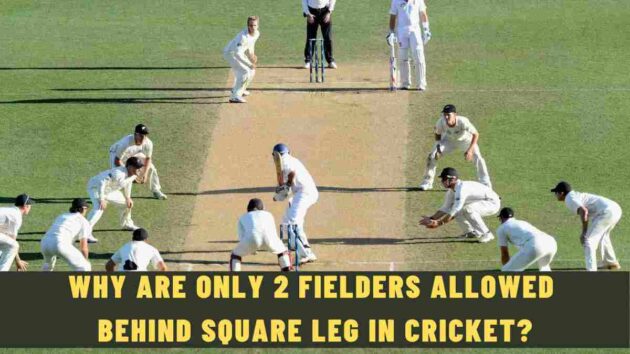Since the game of cricket was introduced, ‘The Gentleman’s Game’ has witnessed changes which have changed the game like never before. Modern-day cricket has made the game fast-paced due to the introduction of T20 cricket.
With every passing decade or within a period of 5 to 6 years, cricket has witnessed changes in its rules, and one such rule is only 2 fielders are allowed behind the square leg.
This rule came into existence when England toured Australia during the 1932-33 series. Many thought the series might end midway due to political tensions between the two countries, but the series was completed successfully.
The Reason Behind 2 Fielder’s Restriction Behind Square Leg
During the 1932-33 series, the England bowlers had to set up a plan for stopping Don Bradman. During this series, the word ‘Bodyline’ came into use.
During that time, there were no fielding restrictions as to how many fielders should be employed on the leg side. Due to this, the England bowlers employed the maximum number of fielders on the leg side, bowled at the bodies of the Australian batters, and made them play on the leg side.
This plan was implemented to stop run scoring, as the batters will have no scoring option and the ball will travel directly to the fielder. This plan helped the England bowlers, who were accurate in bowling that line.
Some bowlers had earlier noticed that Don Bradman looked unsettled when this line was bowled to him but this line came in handy against other Australian batters also.
In the first Test, England won by 10 wickets, but the England bowlers didn’t apply the bodyline method in that test as ‘Sir Don Bradman’ didn’t play that test due to some issues with the Australian Cricket Board.
Bradman made a comeback in the second Test. He got out for a duck in the first innings but scored a century in the second innings. Bradman’s knock helped Australia win the second test and draw the series 1-1.
During the Adelaide Test, Harold Larwood hit Bill Woodfull above his heart and Bert Oldfield in the head, due to which he suffered a fracture. It was later mentioned in Wisden, “Perhaps it was one of the most unpleasant tests that was ever played, and the atmosphere was disgraceful for cricket.”
Due to bodyline tactics, some issues created problems between the cricket boards of the two nations, as it meant that the batters would have to protect their bodies and the game wouldn’t be played in its true spirit.
Cancelling the series would have had financial constraints, so the ACB had to continue playing the series. The governments of the two nations discussed the issue in London.
The Three Lions won the Adelaide Test by 339 runs, the fourth Test at Brisbane by 6 wickets, and the fifth Test at Sydney, thus winning the Ashes.
Intervention by MCC
The MCC took this issue seriously when the West Indies toured England. And when the West Indian bowlers tried to apply the bodyline tactics, the MCC said, “Any kind of bowling that looks like an attack by the bowler on a batter is against the spirit of the game.”
The rule was used by all captains of the county teams, and MCC later implemented the rule that only two fielders would be allowed behind the square leg.
Read Next | How Many Bouncers are Allowed Per Over in Cricket?











